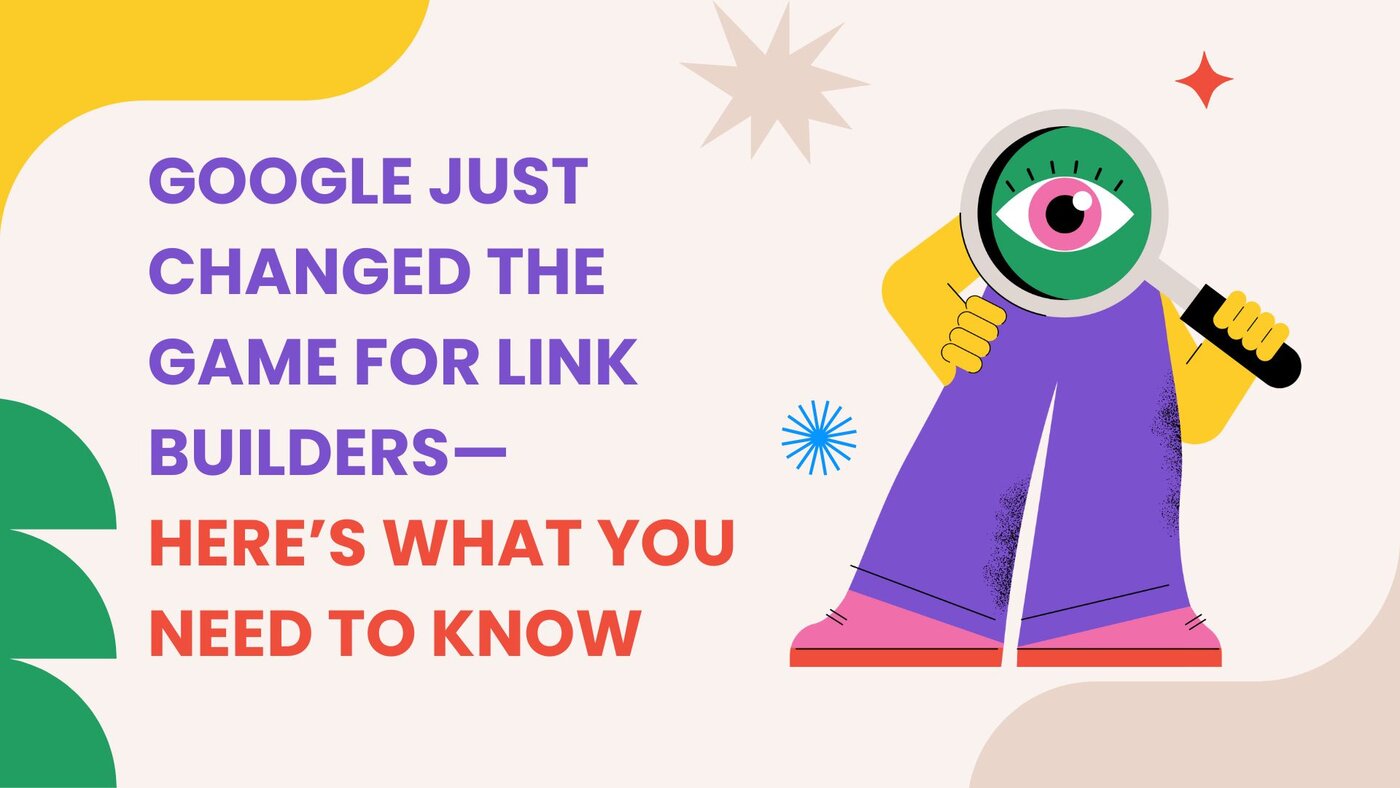
If you're still relying on outdated link building tactics like automated backlinks or PBN, it's time to hit refresh — seriously. In 2025, Google rolled out one of its most impactful algorithm updates yet, and it's already shaking up how backlinks are evaluated. Gone are the days when simply stacking of Do-Follow links from any blog on the internet would rank the website. Now, context, authority, link diversity, and trustworthiness play a major role in the ranking.
This update is a loud wake-up call for SEO professionals, digital agencies, and marketers who want to future-proof their strategies. If your link building methods haven't evolved in the past 12 months or so, there's a good chance you're losing visibility — and it may go fast. In this post, we’ll break down what’s changed, why it matters, and what you should be doing right now to keep your SEO efforts afloat and growing.
What Did Google Change?
The latest Google algorithm update places greater emphasis on link context, source authority, and editorial relevance than ever before. Here's what's different:
- Links in low-quality or AI-generated content now carry less weight
- Manual outreach and organic placement get rewarded
- Backlinks from pages with high engagement metrics (time on page, scroll depth) are prioritized
- Spammy guest posts or PBNs risk penalty or devaluation
If your strategy leans on outdated guest posting or automated link placements, it’s time to evolve.
What This Means for Link Building in 2025
Google is rewarding human-first, content-rich, and niche-relevant backlinks. In other words: manual link building is back in the spotlight.
This means:
- You need editorially placed links on relevant, trusted websites
- Anchor text must be natural and contextually integrated
- Bulk link packages from random blogs won't cut it anymore
- White-hat strategies like guest posting and niche edits are still valuable—but only when done right
Need help staying compliant? Check out our White Hat Link Building Services.
5 Link Building Best Practices Post-Update
To stay ahead, here’s what you should double down on:
1. Prioritize Authority & Relevance
Prioritize building backlinks from niche-specific, high-authority websites. In today’s SEO landscape, relevance isn’t just recommended—it’s a proven ranking signal that can make or break your visibility in search results
2. Go Manual or Go Home
Google is cracking down on automation more than ever. That means it's time to prioritize manual outreach strategies, human-edited content, and authentic website partnerships. Our Manual Link Building Services are built to meet these exact standards—delivering real links that Google trusts.
3. Use Editorial Context
Your backlink should be placed within a relevant, informative paragraph—where it adds genuine value to the content—not hidden away in a blogroll, sidebar, or author bio where it carries little SEO weight.
4. Avoid Over-Optimized Anchors
Anchor text like ‘buy best SEO tool cheap’ can now raise red flags with Google’s updated algorithms. Instead, aim for natural-sounding anchors—such as brand mentions, partial match keywords, or even naked URLs—to keep your link profile safe and organic.
5. Audit Existing Links
Clean up your backlink profile by disavowing spammy or low-quality links that could hurt your rankings. Use trusted tools like Google Search Console, Ahrefs, or SEMrush to identify and remove harmful backlinks effectively
Future of Link Building: Quality Over Quantity
This update confirms what many SEOs already knew — not all links are created equal.
Google now tracks signals like:
- Source traffic and credibility
- Reader engagement and bounce rate
- Editorial context and co-occurrence keywords
- Link freshness and crawl frequency
If your link profile is built on quantity alone, it’s time to shift. Even 5 high-quality contextual links can outperform 50 low-value ones.
How GuestPostSale.com Can Help
At GuestPostSale, we’ve already adapted our approach to match Google’s latest guidelines:
- We manually place links in existing high-authority articles via our Niche Edit Services
- Our guest posts are published on real, vetted sites with organic traffic
- No PBNs. No shortcuts. Just white-hat backlinks that last
We help smart marketers stay one step ahead of Google. Whether you’re running an agency or an eCommerce brand, we’ll future-proof your SEO strategy.
Final Thoughts
The latest update from google isn’t just a minor adjustment—it is a strategic shift in how the search engine evaluates trust, authority, and the overall quality of content. Just going after quantity of backlinks or rely on outdated practices is not enough. If your strategy is around low-cost automated backlinks, mass directory submissions, or link-building tools, your website is at risk of falling behind.
This update confirms what Google has been signalling for years: genuine, high-quality backlinks from authoritative, relevant sources matter more than ever. The SEO landscape is evolving very fast, and those who shift to new format now—those who are focusing on sustainable, value-driven link building—will stay competitive. You should Adapt smart, and you won’t just survive this massive shift—you’ll rise and thrive in it.
Frequently Asked Questions
Q1: Is guest posting still effective after Google’s link update?
Yes, if done properly. Guest posts should be published on relevant, high-DA sites with original content and editorial integrity.
Q2: Should I remove old backlinks now?
If your backlink profile includes spammy or irrelevant links, yes. Use Google’s Disavow Tool and consider a link audit.
Q3: How do I future-proof my link strategy?
Stick to white-hat practices, build links in niche-relevant content, and avoid shortcuts. Or better yet, partner with an expert.
Website of Source: https://guestpostsale.com/
Source: Story.KISSPR.com
Release ID: 1597746
